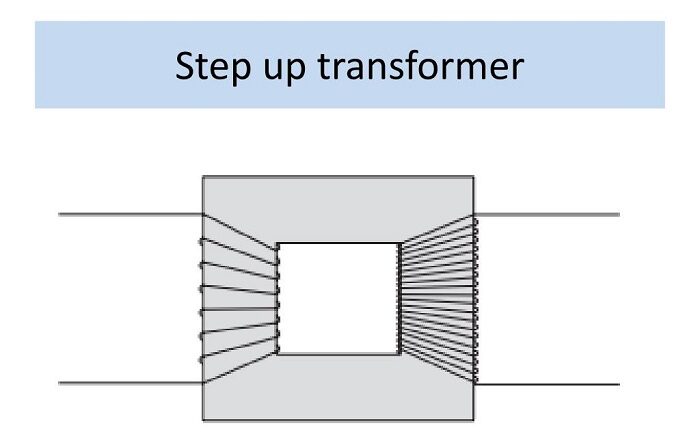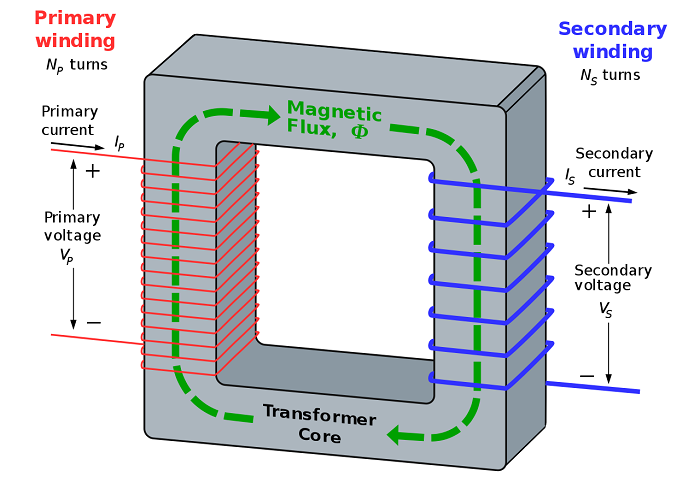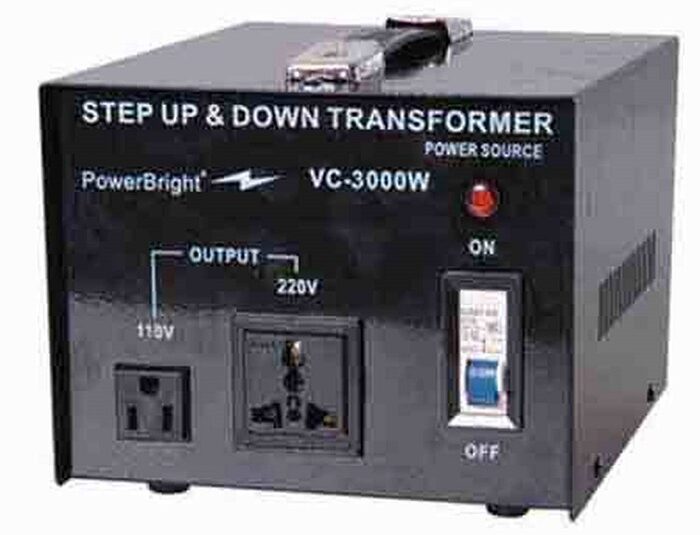Transformer is an electrical device required in the industries to adjust the voltage changes of the power supply. It transforms electrical power from one circuit to another with changes in voltage and current and no change in frequency. The increase in voltage for transmission and the decrease in voltage for utilization can only be achieved by using a step-up and step-down transformer.
Step-up and Step-down transformers are two categories of transformers, categorized based on their function. It is necessary to know the difference between step-up and step-down transformer since wrong usage of your step-up or down transformer might affect and destroy your appliances, and it might cause serious problems. Read this new blog on Linquip to find out more about them.
Step-Up Transformer
First, let’s understand the basic definition of each transformer.
When the voltage is raised on the output side, the transformer is called the step-up transformer. The step-up transformer decreases the output current for keeping the input and output power of the system equal. The voltage reduction capability of step-up transformers depends on the ratio of the number of turns in the primary coil to the number of turns in the secondary coil.
This transformer includes two windings, like primary and secondary. This kind of transformer mainly finds use in the applications of power transmitting and power generating stations applications. The common usage of it is a starter of an electric motor. It takes a lot of voltage to start the motor’s turning. It finds use to boost electrical and electronic devices. Also, In case you have purchased any electrical appliance from a country whose supply voltage is higher than the device’s limited voltage, you will need to use a step-up transformer to convert your voltage to a level that is suitable for the appliance.
Step-Down Transformer
Power companies transmit electricity at high voltage to reduce energy losses, but the high voltage is not useful or safe for most customers. The high-voltage lines are connected to substations having step-down transformers that reduce the voltage for almost all household, electrical appliances, and commercial users. A step-down transformer reduces the output voltages, or in other words, it converts high voltage, low current power into a low voltage, high current power.
The voltage reduction capability of step-down transformers depends on the turn ratio of the primary and secondary coil. Once the power lines reach the level of neighborhoods, the voltages are reduced further for home use. In a Step-down transformer, the primary winding of a coil has more turns than the secondary winding. It finds use in televisions, inverters, voltage stabilizers, also in the main adapters and chargers for cell phones, CD players, and stereos.
Read More on Linquip
- What is Step-Down Transformer and Its Application?
- Difference Between Voltmeter and Ammeter
- What is Step Up Transformer?
- Types of Transformer: An Article About How Transformers Differ in Construction and Design
- What is the Equivalent Circuit of Transformer?
- EMF Equation of Transformer- Turns Voltage Transformation Ratio of Transformer
- Difference between Power Transformer and Distribution Transformer
Step-Up vs. Step-Down Transformer
A stand-alone or isolated transformer cannot be said step-up or step-down transformer. Thus there is no difference between step-up and step-down transformer from core construction, winding design, and working principle point of view. In fact, a transformer can only be said step-up or step-down when it is put in service. But from the operational aspect, yes there exists some difference between the two. Some differences are explained below, considering the factors: application, output voltage, winding, and the number of turns, etc.
Application
- The step-up transformer is generally used for power transmission. Examples are power plants, X-rays machine, microwaves, etc.
- The step-down transformer finds use in power distribution. Examples are transformer in residential areas, doorbell, voltage converter, etc.
Output Voltage
- The output voltage of the Step-up transformer is more than the source voltage.
- The output voltage of the Step-down transformer is less than the source voltage.
The Secondary and Primary Winding
- In a step-up transformer, the primary winding is made up of thick insulated copper wire, and the secondary is made up of thin insulated copper wire.
- In a step-down transformer, the output current is high, so the thick insulated copper wire is used for making secondary winding.
Voltage Winding
- In a step-up transformer, the high voltage winding is the secondary winding, whereas the low voltage winding is the primary winding.
- In a step-down transformer, low voltage winding is the secondary winding.
Magnetic Field
- In a step-up transformer, the current and magnetic field is less developed in the secondary winding and highly developed in the primary winding.
- In a step-down transformer, the voltage is low on secondary ends, and therefore, the current and magnetic field is high.
Winding Turns
- In a step-up transformer, there are more secondary winding turns than primary winding turns.
- In a step-down transformer, the number of turns in the primary winding is more than the secondary winding.
Rating of Output Voltage
- The step-up transformer extends the voltages from 220v-11kv or above.
- The step-down transformer reduces the voltages from 440 to 220v, 220 to 110v or 110 to 24v, 20v, 10v etc.
Points to Remember:
The Same transformer can be used as a step-up or a step-down transformer. It depends on the ways in which it is connected in the circuit. If the input supply is given on the low voltage winding, then it becomes a step-up transformer. Alternately, if the input supply is provided on the high voltage winding, the transformer becomes a step-down one.
And that’s pretty much it! Now that you know the difference between a step-down vs. a step-up transformer, you can determine what type of transformer you would require.
So, there you have a detailed description of the difference between step-up and step-down transformer. If you enjoyed this article in Linquip, let us know by leaving a reply in the comment section. Is there any question we can help you through? Feel free to sign up on our website to get the most professional advice from our experts.







Nice stuff.
Thanks a lot for your consideration
We encourage you to visit other posts in our blog.
hi..!
thanks for teaching